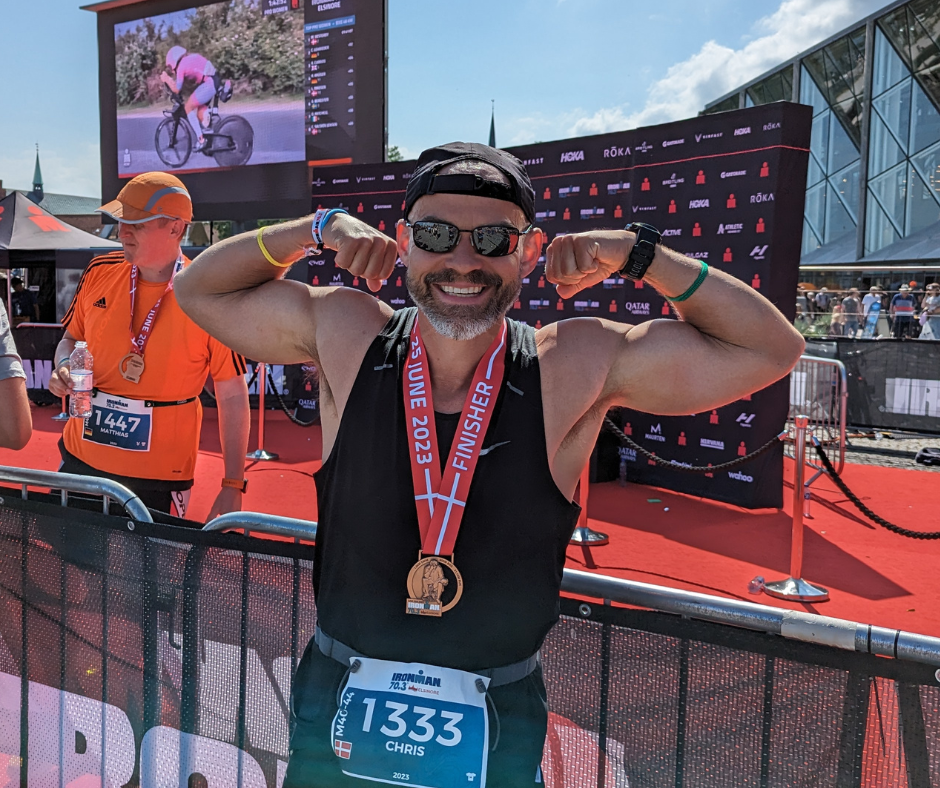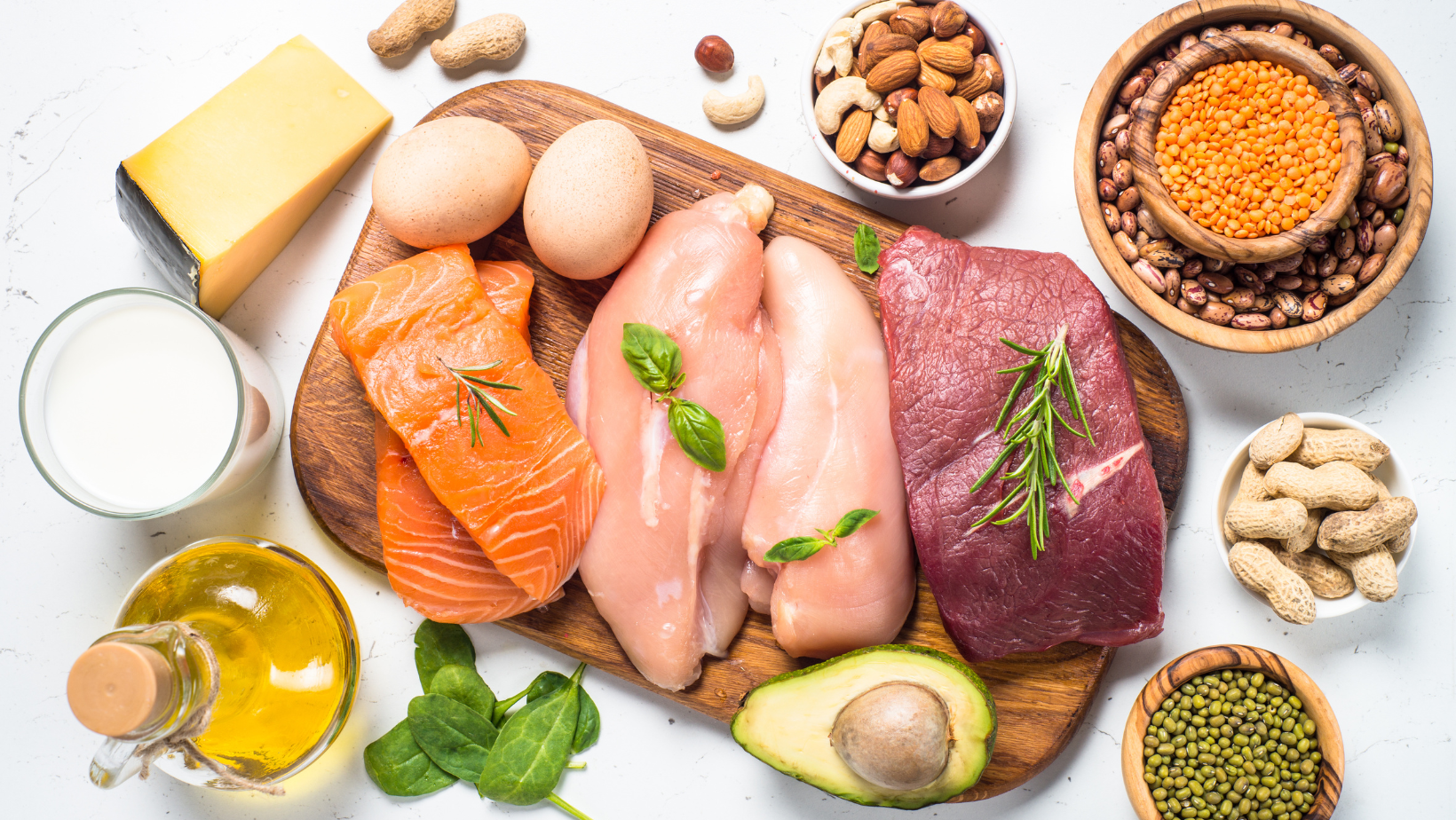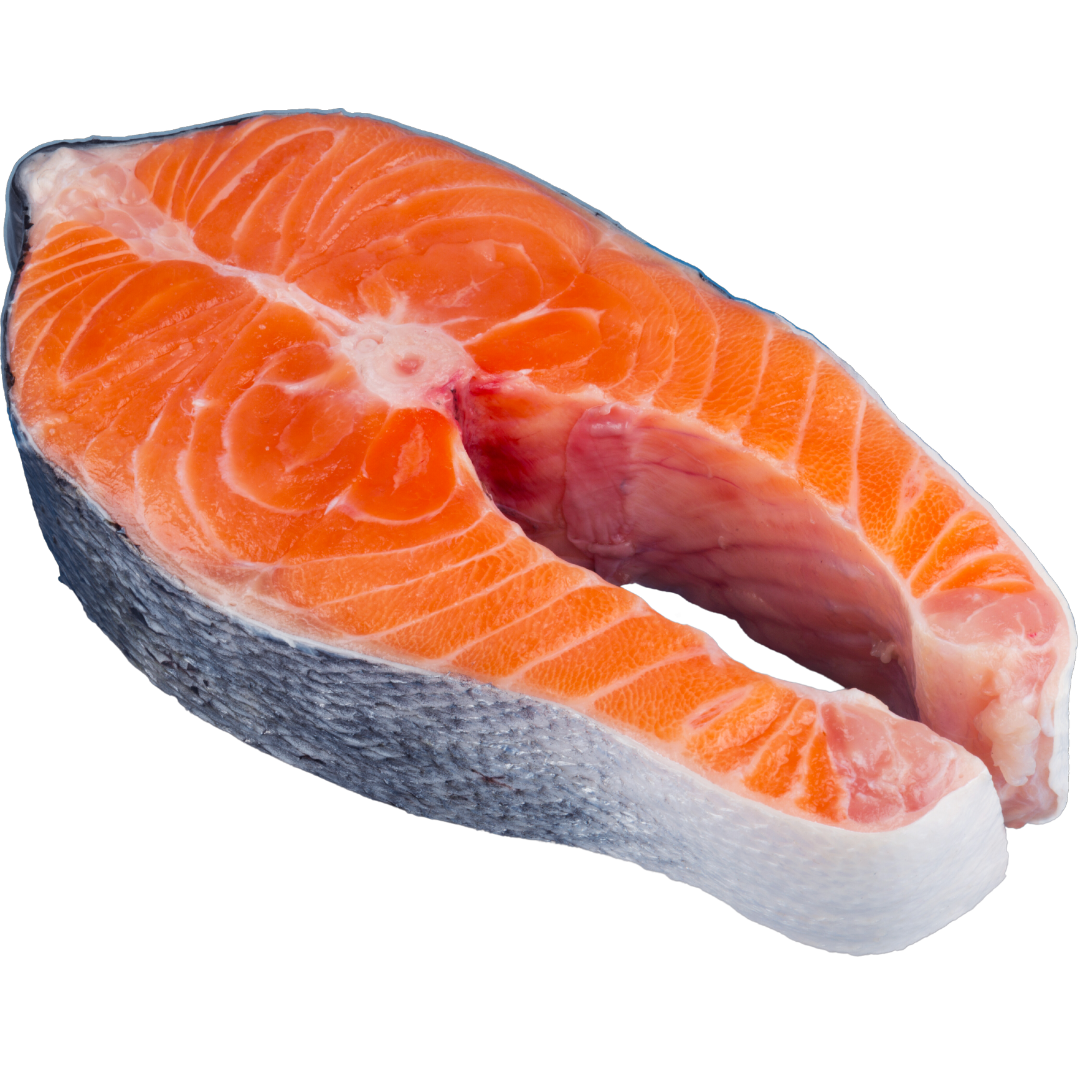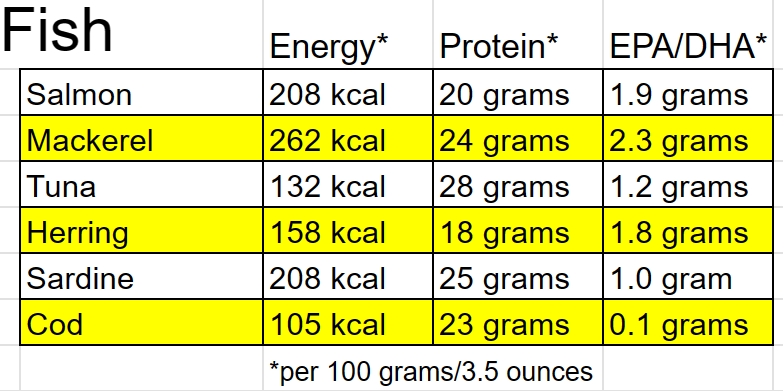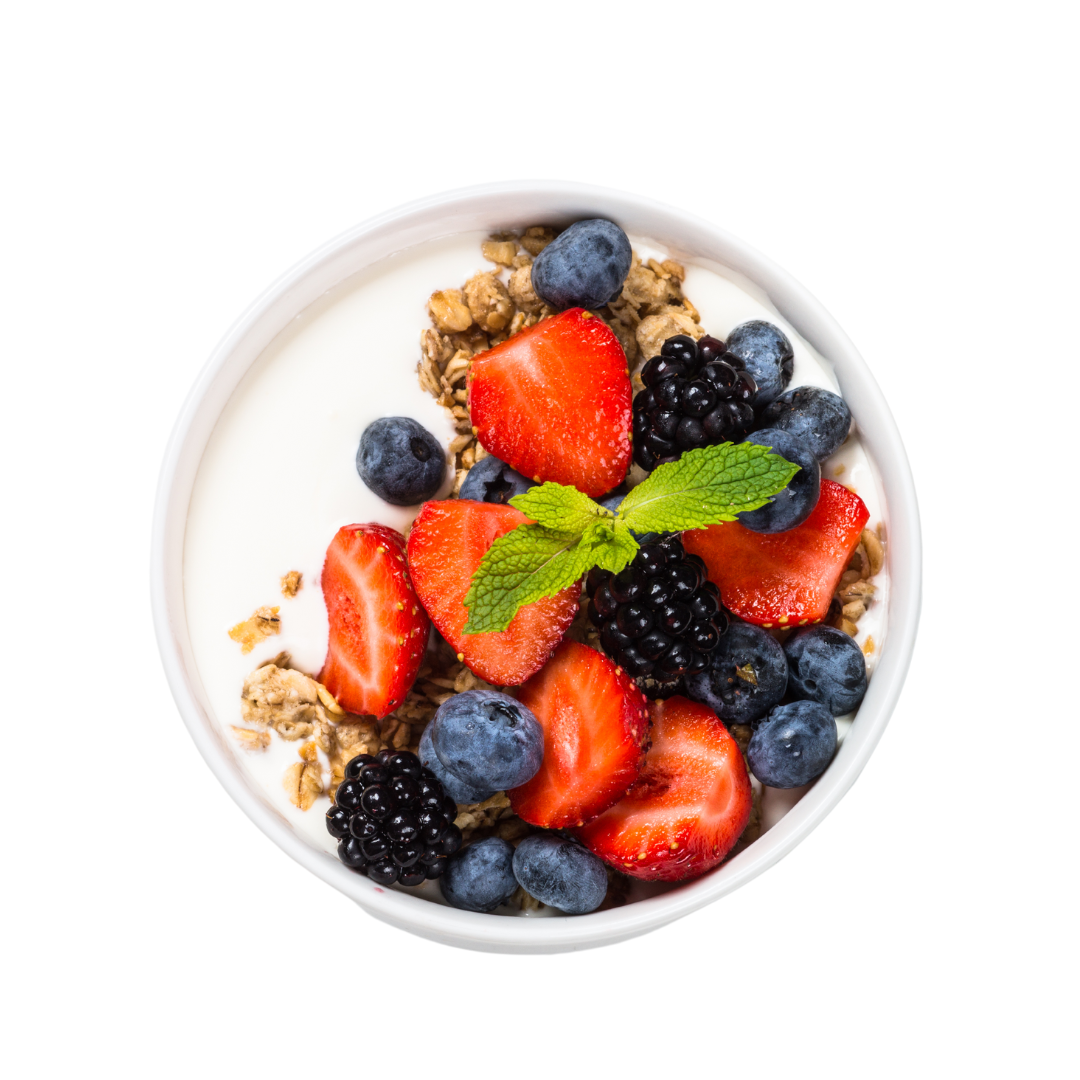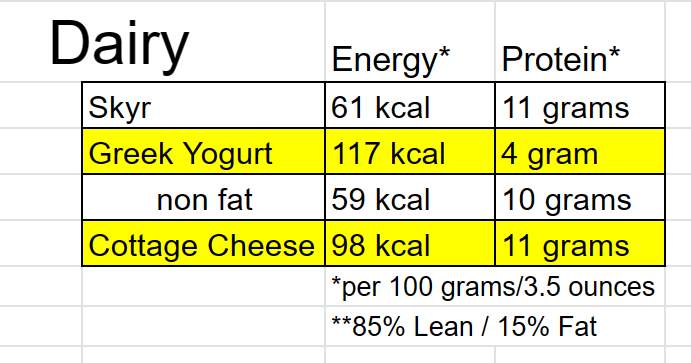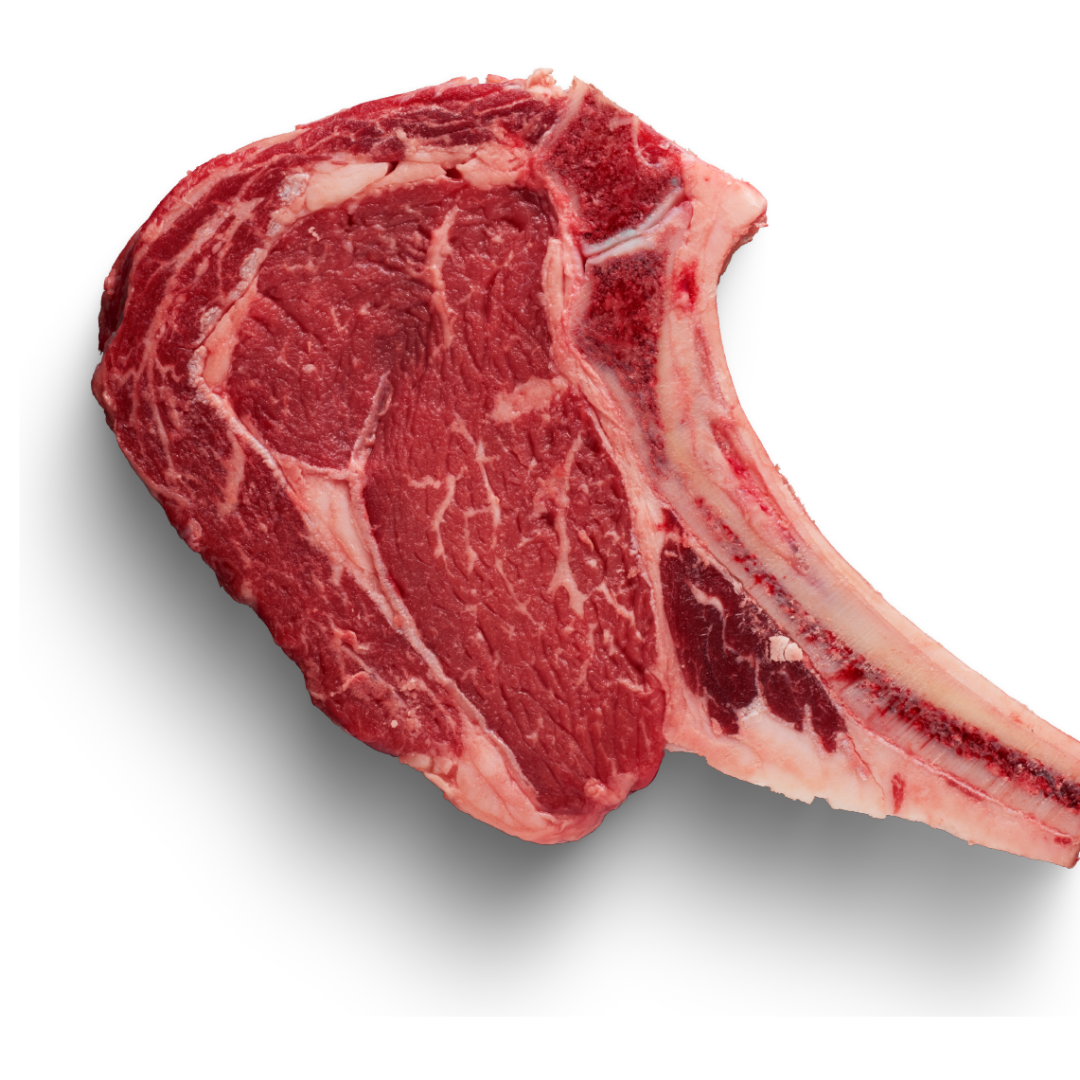Optimizing Protein Intake: Build Muscle, Lose Fat, Boost Recovery
Everyone loves to emphasize the power of protein, but how much does it really matter? How much protein do we actually need? Is there such a thing as too much? And importantly, what are the best sources of protein?
At 43, I'm in the best shape of my life – bigger, leaner, faster, and fitter than ever, and fresh off my second full-distance Ironman. A significant part of my success? A consistent intake of high-quality protein, making up about 20-25% of my daily calories.
In this guide, I'll break down how anyone passionate about fitness can fine-tune their protein intake to achieve similar results – whether you're looking to bulk up, slim down, or boost your performance.
Clickable Table of Contents:
Remember to bookmark this page as your go-to protein guide.
1) Three Key Reasons to Prioritize Protein at Every Meal
I eat protein at every meal– it's a fundamental rule in my diet. Whether it means choosing a less appetizing meal at a restaurant or taking the time to scavenge for some protein at an airport, ensuring adequate protein is non-negotiable for me. Here’s why.
Controlling Hunger and Cravings
Growing up with a standard American diet, about 15% of my daily calories came from protein – not far off the national average. I often ate meals with little or no obvious sources of protein. Pizza, quesadillas, and pasta are all terrible sources of protein. By my 30s, this diet had contributed to me being 20 pounds overweight, prompting a decision to shed the extra weight. However, as with many, dieting initially meant battling constant hunger.
Enter protein, a game-changer for satiety. But you don’t have to just take my word for it; research corroborates this as well. For instance, one study showed that overweight women consumed 441 fewer calories daily by merely switching to a high-protein diet. They weren’t meticulously counting calories or intentionally dieting; they were simply less hungry.
Let that sink in: an effortless reduction of 441 calories daily, roughly equivalent to skipping two slices of cheese pizza. It’s enough to lose around 3 pounds of fat per month.
Unfortunately, this satiating effect of protein is not limitless. Once your body receives enough protein, increasing it further doesn’t boost satiety over carbs or fats. So, what’s the optimal amount? Recent studies suggest the benefits top out at around 1.8 g/kg/day.
For a deeper dive into managing hunger, especially for maintaining visible abs year-round, check out my other blog post: “10 Ways to Manage Your Hunger for Year-Round Visible Abs.”
Building Muscle and Enhancing Strength
Building muscle and getting strong is hard! It requires hours of lifting heavy weights and often takes years to develop a physique that's as functional as it is aesthetic. The last thing you want is to sabotage all that time, effort and suffering.
Protein is the building block of muscle, and nothing derails your gym goals like a low protein diet. Essentially, the more you consume, the more muscle you’ll build and the stronger you become.
In fact, a systematic review encompassing 49 studies found that adding more protein to an already high protein diet resulted in an additional 9% strength gain and an additional 27% increase in fat free mass (i.e. muscle!).
However, the study also found that the gains do hit a ceiling. Eating more than 1.62 grams of protein per kilo of body weight per day resulted in no additional strength gains.
Accelerating Recovery
What’s it like training for an Ironman, while regularly strength training? It’s rough. You need to really dial in your recovery capacity, and that most definitely includes protein.
Imagine training for an Ironman while maintaining a regular strength training regimen. It's rough. Optimal recovery is crucial, with protein playing a key role.
Want to learn more about combining strength training with Ironman training? Check out my blog, Can you finish an Ironman without losing muscle?
Protein facilitates the repair of damaged tissues and cells, hormone synthesis, and growth, which collectively enhance recovery. Proper protein intake supports sustained strength, focus, and endurance, allowing for consistent training.
Occasional lapses in protein intake aren’t catastrophic, especially for moderate fitness goals, but they can have an impact. The consistency of your protein intake throughout the week is crucial. There’s a significant difference between slightly missing your protein target (e.g., 20 grams instead of 30 grams) and severely falling short (e.g., only 5 grams).
What Happens If You Skip Protein at a Meal?
Reduced Satiety: This can complicate dieting efforts, as you may end up eating larger meals or feeling hungry sooner.
Compromised Muscle Growth and Recovery: Consuming protein with every meal promotes greater total muscle protein synthesis. Doubling up on protein in the next meal can’t fully compensate for the missed opportunity.
Lack of Routine: Consistency fosters habit formation. An erratic dietary pattern can derail your nutritional discipline.
Long-Term Goal Impact: Regularly missing protein at meals accumulates over time, much like saving for a significant purchase. Frequent lapses can ultimately compromise your goals.
2) Eating the right amount of protein
So, given all these benefits, how much protein do we actually need? The answer varies depending on your training and lifestyle. Think of it as a spectrum: pure endurance athletes typically need less protein, whereas those combining endurance with strength training require more.
For most people, I recommend starting with a minimum of 1.8 g/kg/day, following the research and guidelines of Menno Henselmans. For instance, someone weighing 68 kg should target about 123 grams of protein daily (68 kg x 1.8 = 122.4)
That corresponds to a moderately high protein diet with roughly 20-25% of your daily calories coming from protein. In practice, this means protein will take up something like 25% of your plate. You can eat more than that, but it won’t increase your health, fitness or gains. You can eat less, but if your goal is to get bigger, leaner, fitter and faster, you’ll be leaving some gains on the table.
Once you’ve calculated your daily protein target, the next step is to divide this total by the number of meals you eat per day. Aiming for 3-4 meals per day is typically ideal. As you progress in your fitness journey or as your goals become more ambitious, the intricacies of protein timing can become more nuanced and personalized. However, delving into those specifics is beyond the scope of this article.
How to track your protein:
To optimize your protein intake, aim to track your total grams of protein each day. I suggest doing this diligently for at least one month. This practice will build portion familiarity, an awareness of caloric densities and create healthy routines. You can create estimates using food labels and google.
For tracking, you can use a simple notepad app on your phone or specialized nutrition apps like MyFitnessPal or Cronometer.
Once you’ve ingrained this habit, you can ease off the meticulous tracking. Nowadays, I rarely track my protein and only occasionally look up protein content for meals. The skill becomes fairly intuitive after a bit of practice.
How to get started, today:
One key to success is making an honest assessment of your capacity to change. How much behavior change are you ready for? How much stress are you under? How motivated are you? Depending on how you answer those questions you may want to start with some small steps or go all in.
Small steps: if you prefer to make small changes, I recommend starting with one meal per day. For example, you could start by ensuring you eat enough protein for breakfast. Do it for 1-2 months and really lock in the habit. Then progress to another meal.
Going all in: if you’re ready to burn the ships and go all in, calculate your daily protein needs and start tracking. I recommend doing it for at least one month. The goal is to completely lock down the habit.
3) Top Protein Sources for Optimal Health and Fitness
Is a High-Protein Diet Healthy?
The short answer is yes. A comprehensive 2020 systematic review, which analyzed data from 32 prospective cohort studies and 31 meta-analyses, concluded that higher protein intake correlates with a lower risk of all-cause mortality. Essentially, a diet rich in protein is beneficial for overall health. Exceptions exist, notably for individuals with kidney disease, but generally, for the healthy population, a high-protein diet is advisable.
Quality Matters: Choosing the Best Protein Sources
However, it’s crucial to recognize that not all protein sources are equal. Quality and type matter significantly when it comes to health and fitness results. We can draw two broad distinctions.
Animal-Based vs. Plant-Based Protein: Animal proteins offer complete amino acid profiles and sufficient leucine, vital for muscle building and recovery. For instance, a 2023 study highlighted that animal-based proteins led to 47% higher muscle protein synthesis rates compared to plant-based proteins. This doesn’t imply that building muscle or optimizing recovery is impossible on a vegan diet – far from it. However, it requires more meticulous diet planning and is a topic that warrants a separate discussion.
Whole Foods vs. Processed Protein: Generally, whole food sources of protein are superior to processed ones, even when the latter contain all essential amino acids. Take, for example, whole milk, which outperforms skim milk in terms of muscle building. Whole foods not only assist in muscle development but also aid in weight loss, recovery, and increases your life expectancy.
Examples of whole food protein: steak, salmon, tuna, eggs, milk, Greek yogurt, chicken, turkey etc.
Examples of processed protein: chicken fingers, chicken wings, protein bars, bacon, sausage, etc.
Keep in mind that processed sources of protein aren’t bad. But for most goals, they should be minimized. A good goal for most people would be consuming about 80% of their protein from whole foods.
Alright, there’s the 30,000 foot view. Below I take a more detailed look at protein sources, answer common questions and give some examples.
Fish: A Nutritional Powerhouse
Fish stands out as one of the healthiest protein sources available. Oily fish, rich in beneficial fats, particularly marine Omega-3s like EPA and DHA, offers numerous health benefits. Meanwhile, leaner white fish is an excellent low-calorie option, making it ideal for weight loss. However, it's important to differentiate between highly processed fish products (like fish sticks) and less processed options (such as a baked salmon filet). Below is a table detailing calorie, protein, and EPA/DHA content per 100-gram serving of various fish.
Poultry & Eggs: Versatile and Nutrient-Dense
Poultry is another indisputably healthy source of protein. There’s a reason every bodybuilder jumps at the chance to eat skinless chicken breast. It’s low calorie, high protein and relatively cheap.
Eggs are equally impressive. They're affordable, incredibly nutritious, and boast an almost perfect balance of amino acids and fatty acids, not to mention their satiating properties. But are they heart healthy?
Eggs and Cholesterol: The Big Debate
Eggs, known for their high cholesterol content, have long been linked to heart disease concerns. Here are three key points to consider about eggs, cholesterol, and heart health:
Dietary Cholesterol Impact: Research indicates that for about 70% of people, a high-cholesterol diet doesn’t significantly affect blood cholesterol levels. (My personal cholesterol readings, for instance, are always perfect.) For the remaining 30%, dietary cholesterol can have an impact. This underlines the importance of regular blood work and understanding your family history.
Cholesterol Types: In those affected by egg consumption (the 30%), eggs tend to increase both HDL (good) and LDL (bad) cholesterol. Notably, they often raise the larger, less harmful type of LDL cholesterol. The debate continues on whether eggs are detrimental for this segment of the population, as current research presents mixed conclusions.
Consumption Limits: Studies have shown that consuming up to three eggs per day is heart-healthy in young adults. The effects of higher consumption hasn’t been studied.
For those concerned about cholesterol, consider opting for egg whites, which are cholesterol-free. I often mix three whole eggs with additional egg whites for a balanced approach.
Dairy: A Nutritious Choice
I love dairy and eat a ton of Skyr (high-protein Greek yogurt). It is relatively cheap, low calorie, loaded with calcium and protein. But is it healthy? Lucky for us, science has a definitive answer.
A comprehensive review of the scientific literature assessed dairy's health impacts. The findings were clear: dairy consumption is linked to a reduced risk of several chronic diseases and cancers, and it doesn't affect all-cause mortality. In other words, it's a healthy choice. Additionally, dairy has been shown to improve body composition and aid weight loss efforts. If you're not lactose intolerant, dairy is an excellent addition to your diet.
Meat: Balancing Nutrition and Preference
Pork, beef, and lamb are all excellent protein sources, packed with nutrients. If weight loss is your goal, opting for leaner cuts is advisable.
However, when it comes to red meat, there are a few health considerations:
Processed vs. Unprocessed: A systematic review and meta-analysis found that processed red meats (like cold cuts, bacon, sausages, and hot dogs) are associated with a 42% increased risk of coronary heart disease. Fortunately, unprocessed red meats, such as steak, were found to be healthy.
Cooking Methods: Cooking red meat at high temperatures, such as grilling over an open flame, has been associated with an increased cancer risk.
Balanced Diet: A study in 2020 found that diets high in fruits and veggies reduce the risks of cancer associated with eating processed red meat.
In summary, unprocessed red meat is perfectly healthy and very nutritious. It’s a great source of protein and a bunch of vitamins and minerals. Minimizing processed red meat and avoiding cooking at high temps is a good idea. And a balanced diet high in fruits and veggies will give you more wiggle room.
Thanks for reading!
This article is part of a series that covers the three macronutrients and veggies. You can check out the other articles in the series with the following links.



